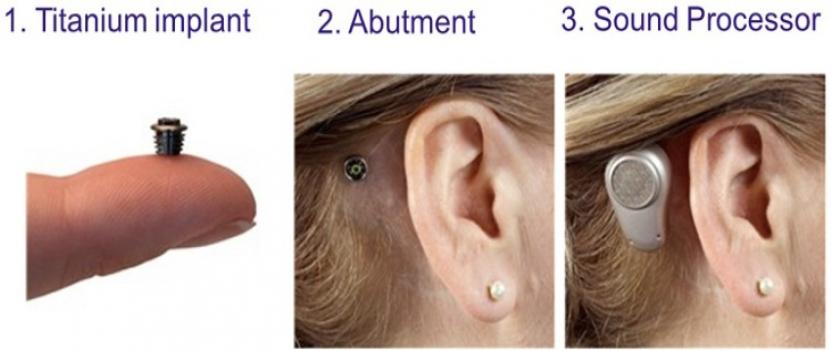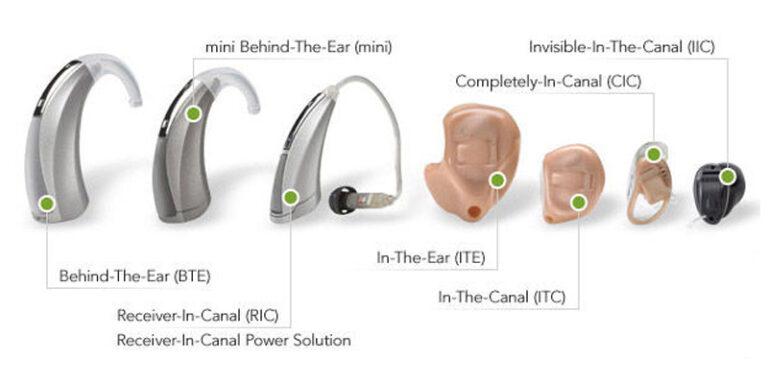BAHA (Bone Anchored Hearing Aids)
The conventional hearing aids amplifies the audio or sound through technology, but the Bone Anchored Hearing Aids are surgically fixed to alleviate the hearing loss through bone transmission of sound vibrations. It was the concept and development of Dr. Per-Ingvar Branemark, the first bone-anchored hearing aid was implanted in 1977 and these were first commercially…

The conventional hearing aids amplifies the audio or sound through technology, but the Bone Anchored Hearing Aids are surgically fixed to alleviate the hearing loss through bone transmission of sound vibrations. It was the concept and development of Dr. Per-Ingvar Branemark, the first bone-anchored hearing aid was implanted in 1977 and these were first commercially available in 1987. In the present day, bone-anchored hearing aids have been extensively enhanced upon and are an efficient hearing loss solution for specific kinds of hearing loss. At present, there are three makers with FDA-approved BAHA (Bone Anchored Hearing Aids): Oticon Medical, Cochlear Americas and Sophono (Medtronic).
There are three main aspects of the BAHA or Bone Anchored Hearing Aids i.e. a titanium implant, a sound processor and an external connecting component. All through a hearing aid fitting process, that on an average takes less than one hour, a tiny titanium implant – usually only 3 or 4 millimeters – is positioned into the bone at the rear of the ear. In due course, it amalgamates naturally with the bone. A minuscule abutment is then placed in and extended all the way through the skin. A detachable microphone and sound processor is then attached to this abutment. A number of Bone Anchored Hearing Aids are now incorporating magnetic links among the processor and implant, like a cochlear implant. Once this process is done, the BAHA make use of the inner bone vibration making a natural communication passage in the inner ear for sound to pass through. Contrasting the conventional hearing aid functionality of sending audio signal through ear canal and middle ear, this type of hearing aid sends vibrations through its sound processor via electromagnetic coupling base (abutment) to the implant. Sequentially, the implant vibrates the adjacent bone, which further sends sound waves in the inner ear that signals the hair cells and acoustic nerve. The major advantage of Bone Anchored Hearing Aids is that they avoid the outer and middle ear structures and is the only alternative for those who have outer or middle ear deformities, hypersensitivity or persistent ear infections. The device position does not harm the inner ear, so it can be detached if required devoid of causing any harm to the patient’s existing hearing capabilities.
Bone Anchored Hearing Aids are very much effective in specific cases like people who have ‘chronic infection’ as time and again they have repeated drainage from their ears. Insertion of a conventional hearing aid in the ear may aggravate chronic infection by blocking the ear canal, while a BAHA doesn’t choke the ear canal. They are even effective in scenario where wearer has allergies from materials used in hearing aids or earmolds. Another scenario is ear canal contraction or deformed middle ear or missing pinna (external ear), as BAHA carries sound vibrations straightforwardly to the inner ear by being in direct contact with the skull bones. In single sided deafness person face problems like localization (diminishing directional ability to locate source of sound) or speech recognition can be cured by using these hearing aids. Some other conditions where Bone Anchored Hearing Aids have proved very effective are Acoustic neuroma, Meniere’s disease, Middle ear disease or dysfunction, sudden hearing loss & Cholesteatoma etc.
For prices, technical specs or any other enquiry pertaining to the product, buying options etc contact HNR@ 7702407770
Or write to us at contact@hnrspeechandhearing.com







